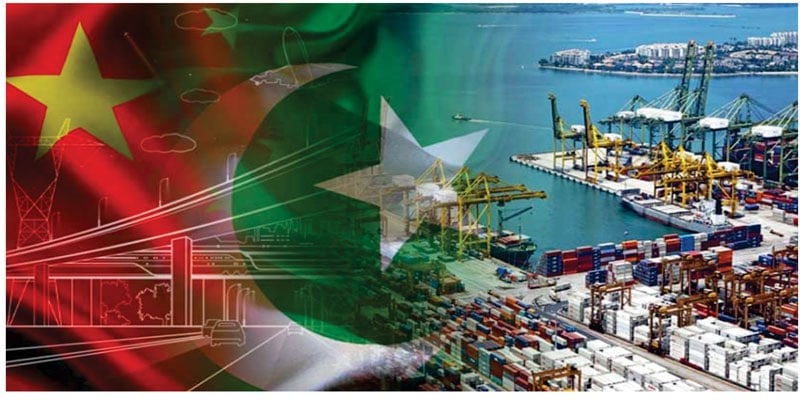Enhancing Connectivity and Trade: At its core, CPEC is designed to enhance connectivity between China, Pakistan and the broader region. The corridor includes a network of highways, railways and pipelines that significantly reduce transportation costs and time. By linking the Xinjiang region of China with Gwadar Port in Pakistan, CPEC creates a vital trade route facilitating the movement of goods between China, the Middle East, Africa and beyond. As leaders from the SCO gather in Islamabad, the importance of this route in fostering economic ties and ensuring smoother trade flows becomes increasingly clear.
The strategic location of Gwadar Port at the crossroads of major international shipping lanes positions it as a key hub for global trade. The development of Gwadar into a modern port city is expected to unlock new economic opportunities for Pakistan, transforming it into a regional logistics and trade centre. This transformation will contribute not only to Pakistan’s economic growth but also to that of its neighboring countries, thereby fostering greater regional integration.
Economic Growth and Industrial Development: One of CPEC’s primary goals is to stimulate economic growth through large-scale infrastructure projects. The corridor includes a series of industrial parks and economic zones expected to attract significant foreign direct investment (FDI). These zones will offer favorable conditions for businesses, including tax incentives and streamlined regulatory processes, creating a conducive environment for industrial development.
The establishment of these economic zones is anticipated to boost Pakistan’s manufacturing sector, diversify its economy and create numerous job opportunities. By attracting international investors and facilitating industrial growth, CPEC will contribute to the economic upliftment of various regions within Pakistan, promoting balanced regional development and reducing economic disparities. This is particularly relevant as SCO member states seek collaborative pathways to bolster their economic resilience.
Energy Security and Sustainability: A critical component of CPEC is its focus on addressing Pakistan’s energy needs. The corridor includes a range of energy projects, including coal-fired power plants, hydropower projects, and renewable energy initiatives. These projects aim to alleviate Pakistan’s energy crisis, a longstanding bottleneck for economic development.
By investing in energy infrastructure, CPEC seeks to ensure a stable and reliable supply of electricity, essential for sustaining economic activities and attracting further investment. The development of renewable energy projects under CPEC also aligns with global sustainability goals, contributing to the reduction of carbon emissions and promoting cleaner energy sources. The current discourse at the SCO conference can provide a platform for collaborative efforts in energy sustainability among member states.
Infrastructure Development and Regional Integration: In addition to energy and industrial projects, CPEC encompasses a wide range of infrastructure development initiatives. These include the construction of roads, bridges, and railways that will enhance connectivity within Pakistan and across the region. Improved infrastructure will facilitate trade, reduce transportation costs, and enhance logistical efficiency.
Moreover, CPEC has the potential to strengthen regional integration by promoting economic cooperation between China, Pakistan, and neighboring countries such as Afghanistan and Iran. The SCO conference serves as a crucial backdrop for these discussions, as fostering cross-border trade and investment can contribute to regional stability and economic development, creating a more interconnected and prosperous South Asia.
Human Development and Social Impact: Beyond economic and infrastructure benefits, CPEC significantly impacts human development. The corridor’s projects are expected to create thousands of job opportunities, improving the livelihoods of people in various regions. The influx of investment and development will support local businesses, enhance skills, and provide better access to education and healthcare.
Furthermore, CPEC emphasizes social development through various initiatives aimed at improving living standards and promoting community well-being. Investment in education, healthcare, and social services is integral to ensuring that the benefits of CPEC are broadly shared and contribute to overall human development.
Strengthening Bilateral Ties: CPEC represents a deepening of the strategic partnership between China and Pakistan. The close cooperation between the two countries in the development and implementation of CPEC projects underscores their shared commitment to mutual growth and stability. This partnership not only benefits the two countries but also enhances their strategic position on the global stage, especially within the framework of the SCO.
By fostering stronger bilateral ties, CPEC contributes to regional security and cooperation. The corridor enhances trust and collaboration between China and Pakistan, providing a solid foundation for addressing regional challenges and advancing common interests. The SCO conference is a prime opportunity for both countries to reinforce their partnership in light of shared economic and security objectives.
Future Prospects and Opportunities: Looking ahead, CPEC holds immense promise for shaping the future of South Asia. As the corridor continues to evolve, it is expected to bring about transformative changes in various sectors. The successful implementation of CPEC projects will pave the way for further economic growth, regional integration, and improved quality of life for millions of people.
The ongoing development of CPEC presents numerous opportunities for collaboration with other countries and international organizations. By leveraging its strategic location and infrastructure, Pakistan can position itself as a key player in global trade and economic cooperation, a narrative that resonates strongly during the SCO conference.
Conclusion: The China-Pakistan Economic Corridor is a visionary initiative with the potential to drive substantial economic and social progress in South Asia. By enhancing connectivity, promoting industrial development, addressing energy needs, and fostering regional integration, CPEC stands as a testament to the transformative power of strategic partnerships and infrastructure development. As the corridor continues to unfold, it promises to unlock new opportunities for growth and prosperity, benefiting not only China and Pakistan but also the broader region and the world.










